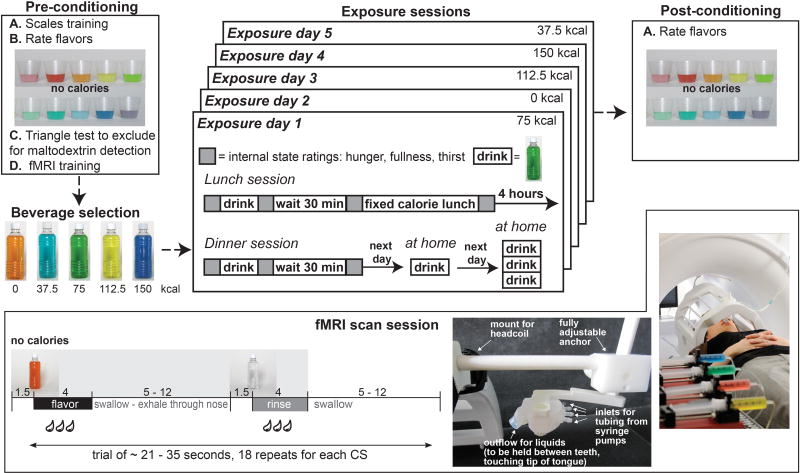Figure 1. Design.
Pre-conditioning session: Subjects rated ten non-caloric versions of the flavored beverages. If five were rated similarly and slightly liked subjects performed a triangle test to rule out oral detection of maltodextrin (Figure 2A). Exposure sessions: Qualifying subjects were scheduled for 5 exposure days (1 for each of 5 beverages differing in maltodextrin load as shown). At each session two bottles of the same beverage were consumed in the lab, one in the evening and three the next day at home for a total of 6 exposures per beverage. Post-conditioning session: Subjects again rated the 10 non-caloric versions of the flavored beverages. fMRI scan session: Brain response to the non-caloric versions of the five beverages was assessed using previously validated fMRI protocols and flavor delivery methods. For further details please refer to the STARS methods.

